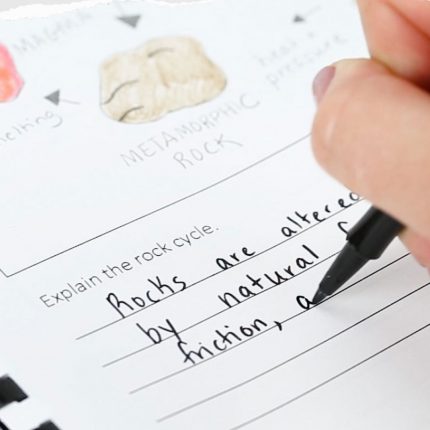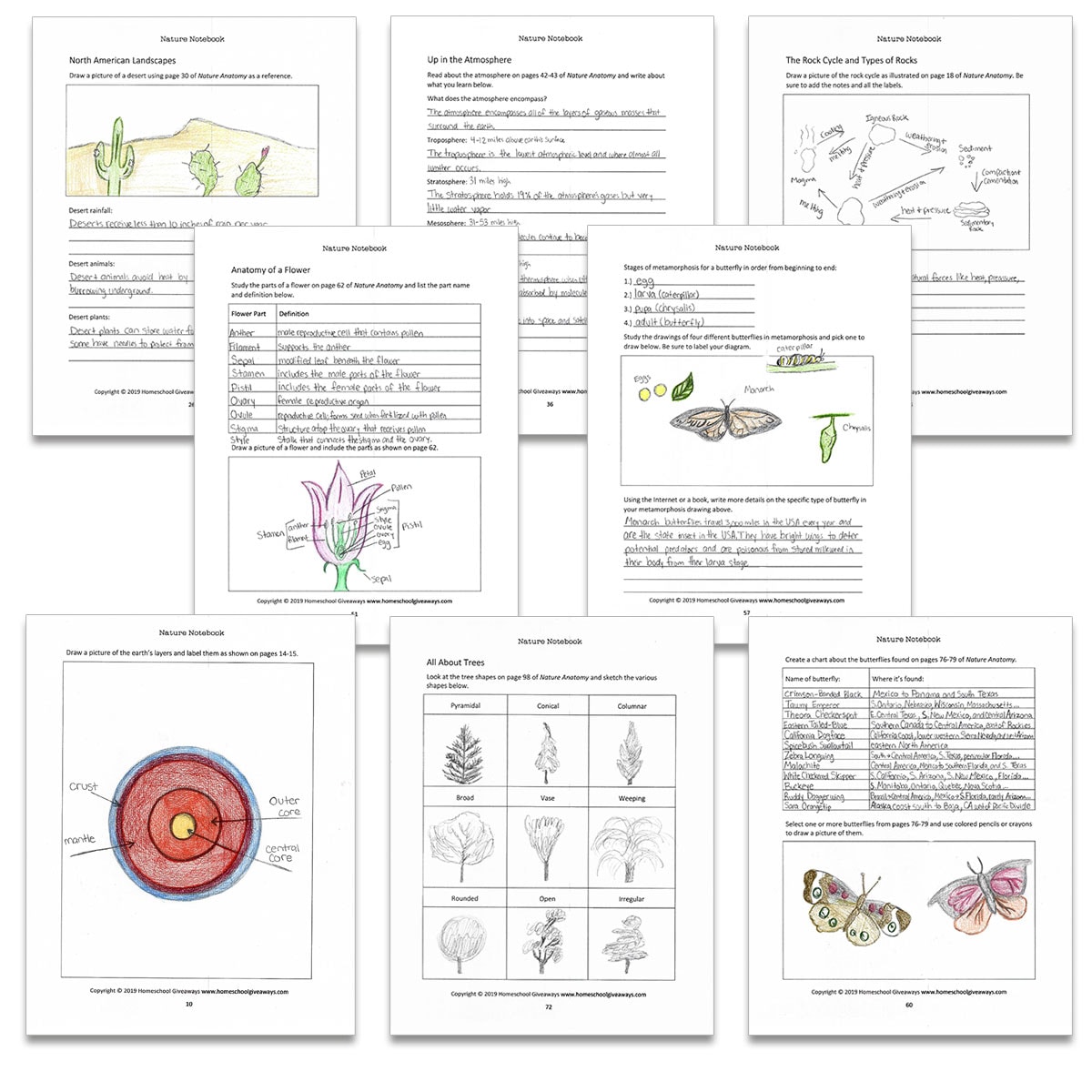
The Best Notebooking Ideas for Your Homeschool
June 29, 2022Post sponsored by Daily Skill Building
Homeschool notebooking is a unique method of homeschooling that encourages students to work independently. Through written narration, drawing, and sketching, students show what they have learned. As a matter of fact, notebooking is a preferred method for creative students! Let’s explore some of the best notebooking ideas for your homeschool.
Notebooking Ideas
If you are interested in homeschool notebooking, we’ve got some great notebooking ideas on you how you can use this method to show your student’s hard work. Because notebooking is a great way to transform a blank page into a learning experience, it makes learning fun. Additionally, notebooking encourages independent learning.
What is Notebooking?
You might be wondering what is notebooking in homeschool? Notebooking is an easy way for your students to show what they have learned from reading books. Notebooking is like a combination of journaling and scrapbooking. Since parents often discover this is the best way for creative children to learn, it’s growing in popularity.
What is the notebooking technique?
Firstly, it’s important to know that the notebooking technique is the opposite of textbooks, worksheets, and tests. Particularly, it works great for different subjects and is often used for nature study.
While there is typically a written aspect of notebooking, along with drawing or sketching, there are no solid rules. Often times notebook pages will also include maps, diagrams, and timelines. Older children can hand-draw these components, while younger children may cut and paste from pictures found online or in a magazine.
Benefits of Notebooking
While there are many benefits to notebooking, you might be wondering what they are. So, let’s explore some of the benefits notebooking may bring to your homeschool.
- Benefits of Notebooking for Students: A creative student who struggles with worksheets and dry textbooks may enjoy notebooking. Unlike worksheets, students will be encouraged to express themselves using creative ideas for their own journals. Confusing worksheets and busy work gets laid aside. Gone is the pressure to memorize facts just to pass a test. Children show excitement when they can explore topics of interest to them, and notebooking is a great way to encourage that.
- Benefits of Notebooking for Parents: Indeed, parents agree that reading good books is extremely beneficial for any grade level. Because some homeschoolers would rather read books than do anything else, they often need a way to evaluate learning. Notebooking brings new ideas and ways to record what students learn. In general, notebooking provides an easy way to evaluate how students are interacting with the books that they read. Also, the notebooking approach helps students learn how to work independently, which can free up a homeschool parent’s time to work with other children.
Notebooking in a Charlotte Mason-Inspired Homeschool
Some families are inspired by the Charlotte Mason method of homeschooling and focus on devouring living books. Notebooking is a genius idea for this type of homeschooler. Not only can students add written narration to their notebook, but they can also record new words they come across, which is great for building vocabulary.
Notebooking vs. Lapbooking
Notebooking and Lapbooking are both creative ideas to use alongside any book or subject area. Lapbooks work well for younger students and include a lot of coloring and cut and paste worksheets that get glued to a folder. Although there are more involved lapbooks with graphic organizer style elements good for older students, typically lapbooking is enjoyed by early elementary kids the most.
Often times children graduate from lapbooking to notebooking in upper elementary and middle school.
Notebooking Ideas for Your Homeschool
There are so many notebooking ideas that you can bring to your daily lessons. You can start with a blank notebook, free notebooking templates, or use a Notebook Companion™.
Notebook Companions
A Notebook Companion™ is a ready-made notebooking journal that has been created to use alongside popular books. Notebook Companions help students get the most from a book by including open-ended question prompts to encourage written narration. In addition, space is provided for drawing, sketching, diagramming, and labeling objects they learn about in books.
You can explore dozens of publisher-approved Notebook Companions at Daily Skill Building!
Daily Skill Building’s Notebook Companions are easy-to-use and follow along with topics in the book. They are written to be used independently by students.
Notebook Companions by Daily Skill Building
Using a Notebook Companion™ is a beautiful way to document what your student is learning. In the end, each notebooking page will be a beautiful keepsake!
- Julia Rothman Collection Notebooks (Nature Anatomy, Farm Anatomy, Ocean Anatomy & Food Anatomy)
- Master Books Notebook Companions (Geography, Bible/Theology, Archaeology, Astronomy, Minerals, Caves, Oceans, Fossils, Ecology, Weather and Geology)
- Gail Gibbons Science Books Notebook Companions (Growing collection, perfect for grades K-3)
- Dianna Hutts Aston Notebook Series (A Butterfly Is Patient, A Seed Is Sleepy, A Rock Is Lively, A Nest Is Noisy, and An Egg Is Quiet)
- National Parks Notebook – A Notebook Companion™ for National Parks of the U.S.A.
- Notebook Companions for Insects and Animals Encyclopedias
- The Big Book Series Notebook Companions
- The Sounds of Nature Notebook Series
- And More!
Explore the best open and go homeschool curriculum and Notebook Companions at Daily Skill Building!
Example of a student’s notebooking pages using a Notebook Companion™

Notebooking Ideas
When creating your own notebooking journal, there are so many notebook ideas that you can include. Here’s a list of some of the best things, but you can really add almost anything to your student’s notebook!
- Copywork
- Written Narration
- Character Sketches
- Artwork
- Outlines
- Study Notes
- Book Reports
- Drawings & Sketches
- Diagrams
- Nature Study
- Mind Mapping
- Writing Prompts
- Book Reviews
- Poetry
- Maps & Charts
Building Your Notebooks
First, start with empty journals or use new notebooks for each student if you are not using a ready-made Notebook Companion™. Of course, you can use a separate notebook for a particular topic or for each individual subject. Alternatively, you can use a 3-ring binder for your notebooks. This way you can insert pages and other things listed above that you want to add throughout the school year.
Storing your individual notebooks in a file folder can save space. However, some families do lots of notebooking and store their binders in milk crates for easy stacking!
Important Things to Remember
- The first thing to remember is when using the notebook approach in your homeschool, you don’t have to grade your child’s pages. Above all, you definitely don’t want to mark up their work. However, if you’d like to critique their narrations or sketches, you can write notes on a separate page to share your feedback, or just do so verbally.
- Secondly, you will want to encourage your student to use neat handwriting and do their best work. Remember, notebooking is about igniting a love of learning in your students by allowing them to flourish in exploring topics of interest.
- Lastly, keep in mind that the notebook approach is much different than traditional school work. Many students will thrive with notebooking, but you have to kick aside the thought that you’re not doing enough.
Additional Homeschool Resources
How to Homeschool Using a Unit Study
The Complete Guide to Homeschool Journaling
Latest Posts

While nearly every college and university today is eager to accept homeschooled students into their institutions, homeschooling families need to understand that their student’s application…
Read more >
Guest Post by Gabriel Morse For several years, I sat for long hours every day behind one of those battleship gray desks in a windowless, dull, gray office. The pay was enough to take care…
Read more >
This post is sponsored by Little Monsters Universe. I'm Tina Salmanowitz, an advocate for homeschooling and science education. With over a decade of experience as a science educator (in class…
Read more >


